
Our Sun is a relatively stable star, and does not vary in brightness by very much. Many of the other stars in the sky are NOT constant, but vary dramatically in brightness with time--sometimes a factor of 1000 or more in brightness.
An ETSU Astronomy Observatory Open House presentation by Dr. Beverly Smith

Our Sun is a relatively stable star,
and does not vary in brightness by very much.
Many of the other stars in the sky are NOT constant, but
vary dramatically in brightness with time--sometimes a factor of 1000 or
more in brightness.
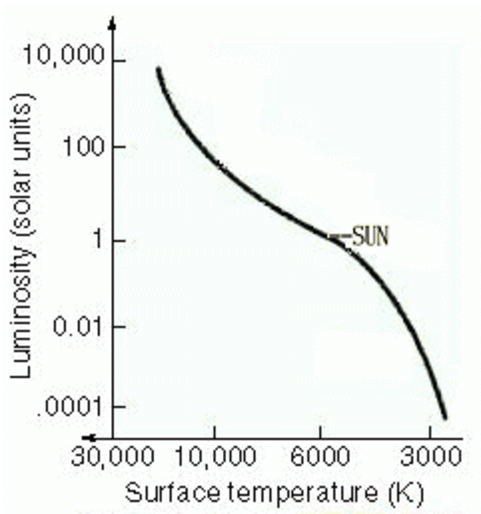
An Hertzsprung-Russell (H-R) Diagram,
a plot of the surface temperature of a star vs. its luminosity
(total energy emitted per second).
The diagonal strip down the middle of this chart is the
main
sequence.
In the core of main sequence stars,
hydrogen fusion is occuring, producing helium.
Our Sun is currently a main sequence star, in the middle of the range of temperature and luminosity.

After the hydrogen in the core of
our Sun runs out, in about 5 billion years or so,
the outer layers
of the Sun will expand
and cool off, and the Sun will become a
luminous
red giant star.
 At the same time the outer layers of the
star are expanding, the core of the star is shrinking and getting
hotter. Eventually it gets hot enough for a new nuclear region
to occur: helium fusion.
This new source of energy stabilizes the star,
and the outer layers contract back in and heat up, and the star
moves back to the left on the H-R diagram, to hotter temperatures.
But the helium doesn't last forever.
When it runs out, the star will again expand even larger,
and get even more luminous. The star moves
up to the right
on the H-R diagram. This section of the H-R diagram is called
the Asymptotic Giant Branch (AGB).
AGB stars are often pulsating, changing their sizes
rapidly with time.
At the same time the outer layers of the
star are expanding, the core of the star is shrinking and getting
hotter. Eventually it gets hot enough for a new nuclear region
to occur: helium fusion.
This new source of energy stabilizes the star,
and the outer layers contract back in and heat up, and the star
moves back to the left on the H-R diagram, to hotter temperatures.
But the helium doesn't last forever.
When it runs out, the star will again expand even larger,
and get even more luminous. The star moves
up to the right
on the H-R diagram. This section of the H-R diagram is called
the Asymptotic Giant Branch (AGB).
AGB stars are often pulsating, changing their sizes
rapidly with time.

A
Hubble
Space Telescope image of the IC 418 planetary
nebula
(the Spirograph Nebula).
Eventually these stars will completely
blow off their outer layers and become planetary nebula,
like the one shown here.
Planetary nebula are simply shells of
ejected gas clouds surrounding the hot inert cores of dead stars.

Perhaps the best-known type of AGB stars are the Mira variables, named after the star Mira
in the constellation of Cetus. This is a plot of the visual brightness
of Mira as a function of time for a five year period.
This plot came from data from the
American Association of Variable
Star Observers (AAVSO).
A Mira variable
is a star whose brightness varies by at least a factor of 10 (i.e., a magnitude change of
at least 2.5),
with a period
of between 100 and 1000 days.
As can be seen in this plot, Mira variables are not perfectly regular;
their periods can vary a bit with time, as can their maximum and minimum brightnesses.

Other kinds of AGB stars are the semi-regulars and the irregulars.
These vary by less than a factor of 10 in brightness, and they do
not have as regular a pattern of variations.
Here's an example of the light curve of a semi-regular star called L2 Pup.
It has been suggested that these may be in an earlier stage of development
than the Miras, and that they may eventually become Miras, however,
this idea is controversial.

AGB stars are often surrounded by
shells of dust. This dust is produced
in the cool outer layers and blown
outwards by radiation pressure from the
star.
This dust can be observed
directly at infrared wavelengths.
(Image from
Peter Woitke's
web page).
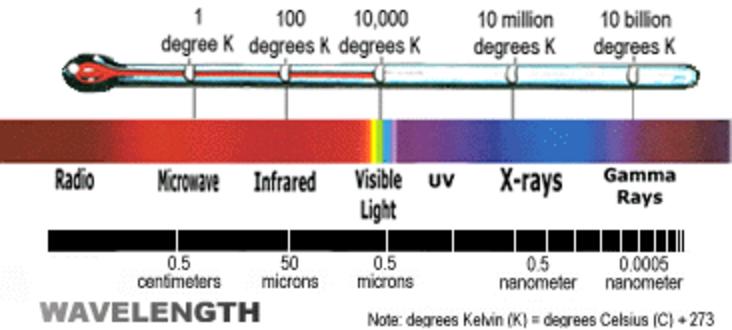
Some AGB stars are very hard to observe at visual wavelengths,
since their dust shells are
very thick. These dust-enshrouded
AGB stars are thought to be very
evolved stars, in the last phase
before becoming planetary nebulae.
These types of stars are at present not very well-studied,
since they are often not on the standard variable star observing lists.

The
Cosmic Background Explorer (COBE) satellite.
This infrared satellite
was designed to study the Cosmic Background Radiation. It also detected
many AGB stars, since these stars are extremely bright at infrared wavelengths.
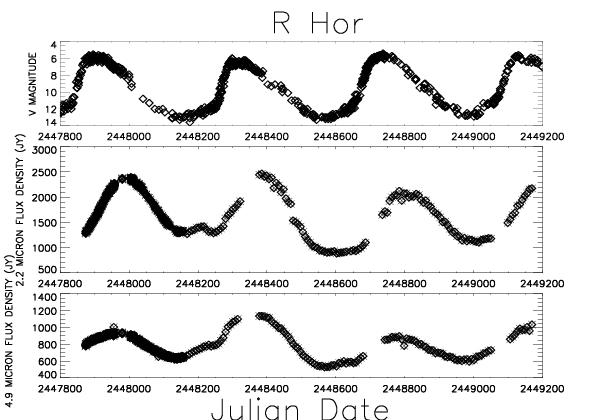
COBE light curves for R Hor at two infrared wavelengths,
2.2 microns and 4.9 microns, compared to that in the visual.
Note that the amplitude of variation is less at 2.2 microns than
in the visual, and even less at 4.9 microns.
Also note that the peak brightness in the infrared occurs later
than that in the visual.

COBE 1.25 microns and 4.9 micron light curves for R Car, compared
to those in the visual.
Note again the decreasing amplitudes with increasing wavelength.
Also note the inflection points in the rising portion of the light curves.
For more information and more light curves,
see
Smith et al. 2002, Astronomical Journal, volume 123, 1411.

The
American Association of Variable Star Observers
collects measurements of variable stars from
hundreds of amateur astronomers from all over the country,
and provides this data over the web to astronomers
all over the world. This is a very useful service,
since it is impossible for professional astronomers
to monitor all these stars on their own.
It is important to have simultaneous observations,
so that secondary glitches, times of maxima,
and amplitudes of variations at different
wavelengths can be compared directly.

ETSU students enrolled in the Variable Stars course are
using the
14" ETSU telescope (under the dome) to monitor
these stars.
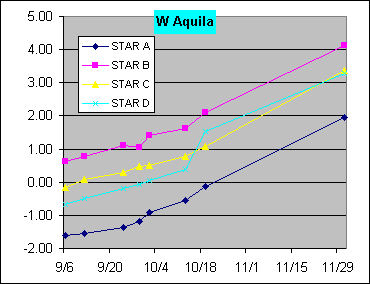
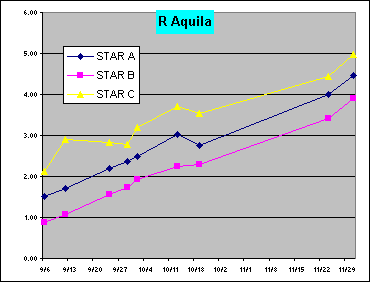
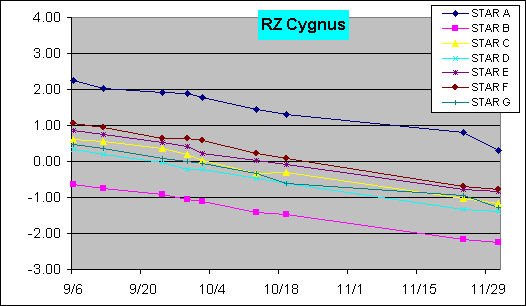
Optical measurements of variable stars (relative to three nearby stars
that are constant). These data were obtained by Susan Dyer.
More light curves are available at the ETSU Observatory web page
at
http://www.etsu.edu/physics/etsuobs/obslocal.htm.
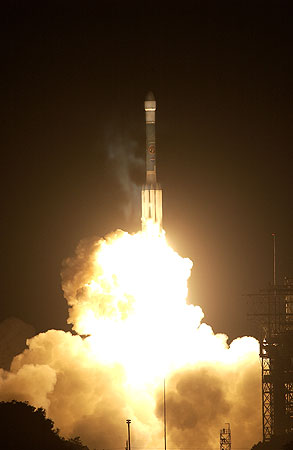
The new
Spitzer infrared telescope was successfully launched on
August 25, 2003, and is currently being
used.
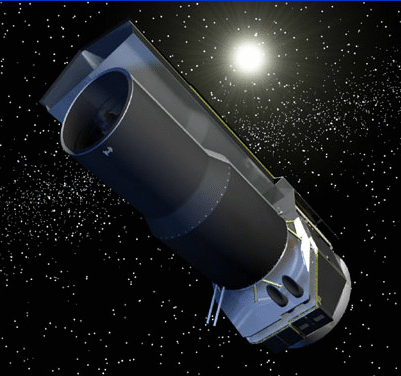
Here's a picture of
Spitzer.
 The Stratospheric Observatory for Infrared Astronomy (SOFIA),
a 747 airplane with an infrared telescope inside,
is currently
being built.
The Stratospheric Observatory for Infrared Astronomy (SOFIA),
a 747 airplane with an infrared telescope inside,
is currently
being built.
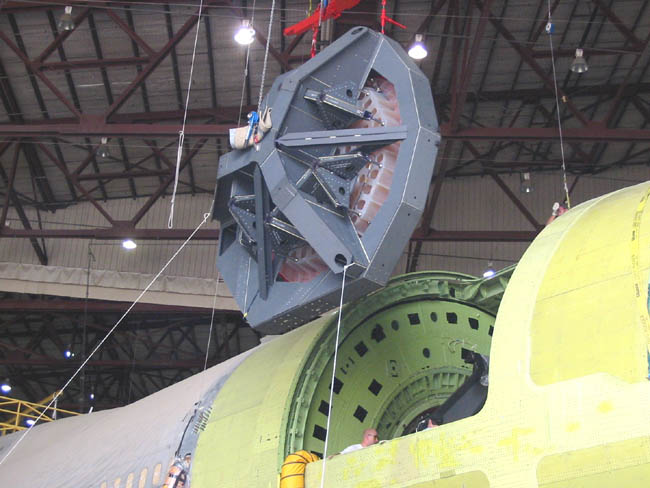
The primary mirror for SOFIA
was installed
July 15, 2003. This mirror is 2.8 meters
in diameter. SOFIA is expected to start general observing
in 2008.